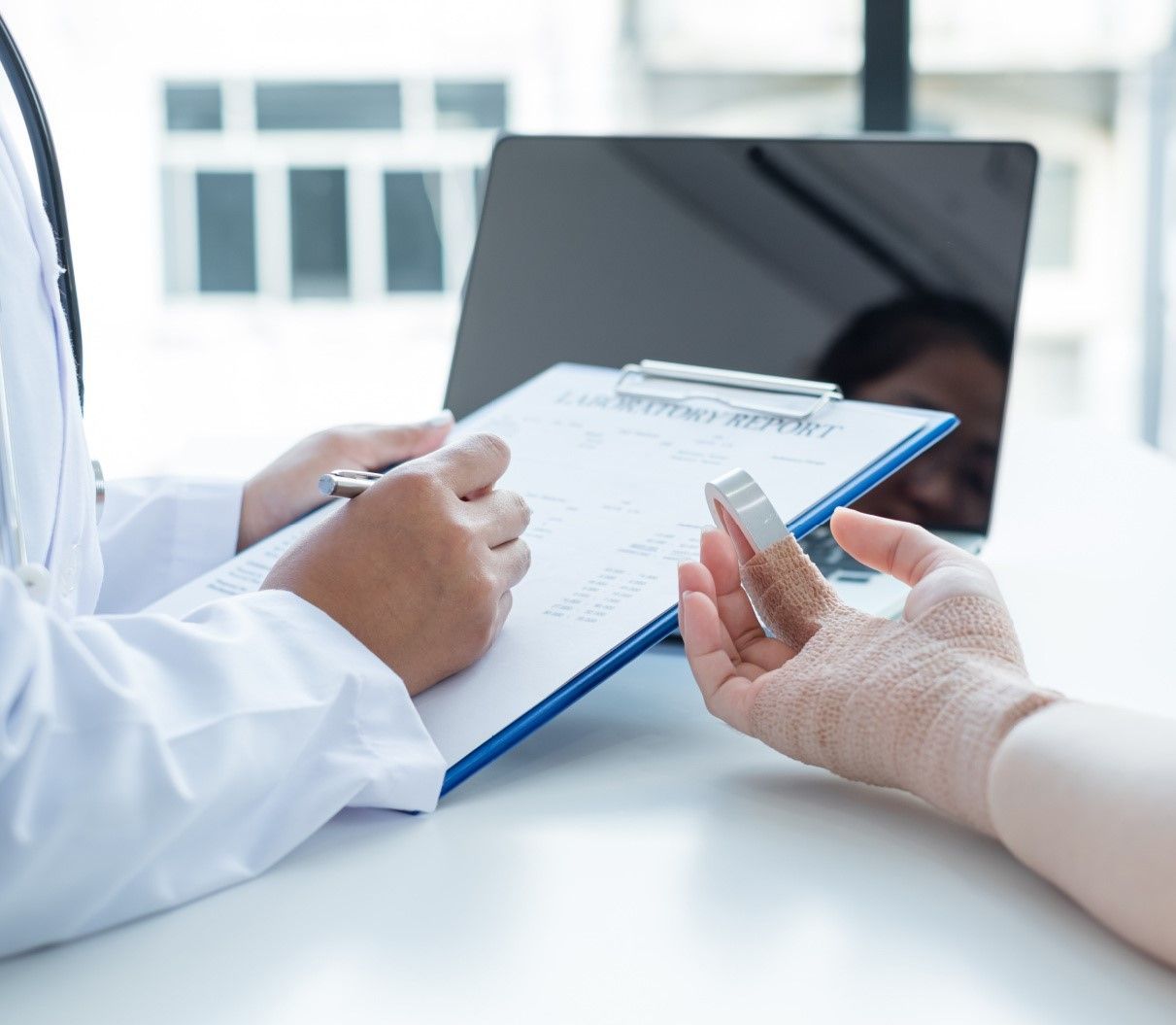3 Things to do in the Moments After a Fracture

On average, every person will suffer two broken bones in their life. It is an unfortunate reality that affects us all. In this blog, we will provide a guide for what you can do in the moments after a fracture to minimize the harm caused by a broken bone. At MidAmerica Orthopaedics, we provide care for patients who have suffered fractures – from surgery to physical therapy and everything in between – but this is for those crucial first moments where you are not yet able to get to one of our clinics.
First, let’s define what a fracture is. A fracture is any partial or complete break of a bone. Fractures can occur in a multitude of ways; most commonly it occurs in a blunt force manner, such as a hard fall or a motor accident. However, they can also be caused by repeated stress to the same area, from high-intensive activities like running or various sports. These are classified as stress fractures, and they can be more difficult to recognize and treat because of their gradual effects. With this being said, this article will focus more on handling the types of fractures that are recognizable from their point of impact, and one of these types is called a compound fracture, and others are called open fractures and closed fracture. Doing the right thing in the moments after a fracture is crucial to kicking the recovery process off.
Step #1: Don’t Move the Injured Area
Of course, the signs of a fracture are dependent on the affected bone and the severity of the break. Many common fractures, such as ankle or wrist fractures, are immediately visible to the naked eye because of the bone abnormally protruding. Also, swelling and bruising are often visible signs. If this is the case, immobilize the extremity containing the broken bone right away, and don’t try to realign the fracture. Oftentimes suffering a fracture can induce shock, so remembering this in the moment is a difficult task, but keeping it as a general rule and being prepared as best you can will make a difference.
Step #2: Apply a Cloth-Wrapped Ice Pack
Applying an ice-pack to the injured area can help reduce swelling and pain. If you have these items on-hand, fill a plastic bag with ice cubes, wrap it in a cloth or towel of some kind, and apply it to the fractured extremity. Be careful not to apply directly onto the skin or to put too much pressure on, but performing this small procedure will help you in the time it takes between the initial fracture and a visit to an orthopedic clinic.
Step #3: Call MidAmerica Orthopaedics
When you have been injured, our Orthopaedic Immediate Care clinics are more equipped and able to see you and give you the treatment that you need. We have walk-in availability Monday through Saturday, and can take appointments as well. We offer reassuring and comprehensive care for all manner of injuries at our two suburban Chicago locations.
Fractures can oftentimes be very tricky to navigate and often take months or even years to fully heal. Whether it is a stress fracture or a compound fracture, treatments such as phyical therapy are often necessary. If you remmeber these three tips however, you can potentially shorten your recovery period and get ack to doing the things that you love.

